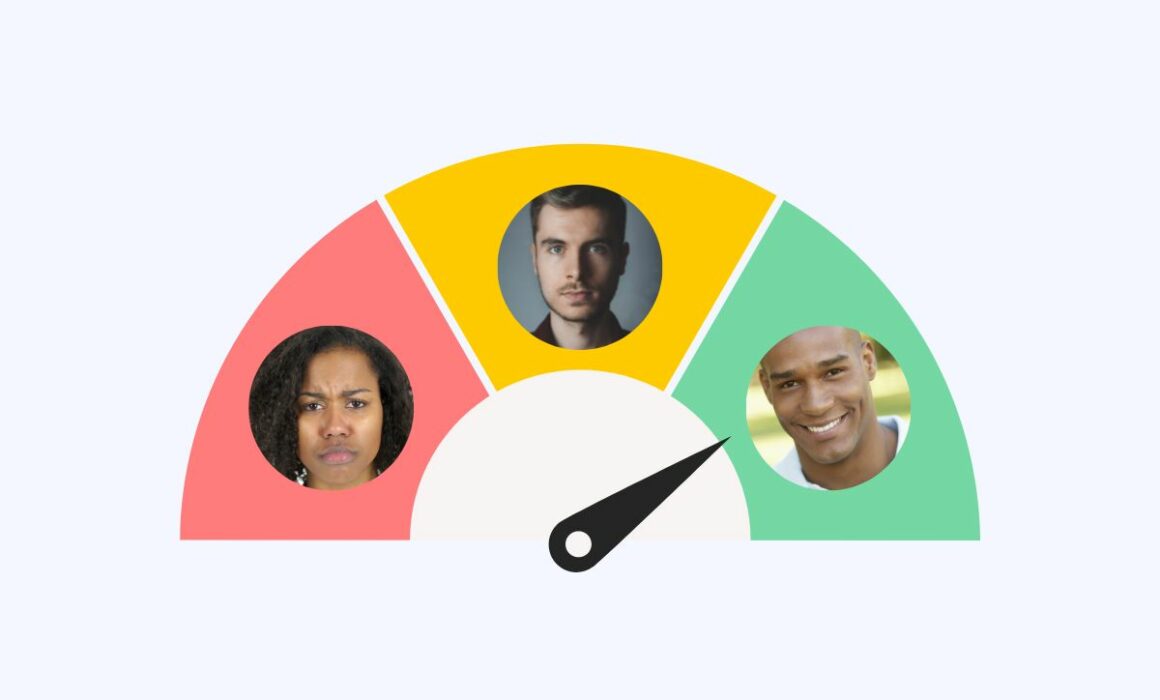How To Optimise The Customer Decision Journey?
Customer decision journey (CDJ) is a process to understand how consumers buy products in a changing market. This framework allows you to identify moments of influence for the consumer and the product.
The customer decision journey enables you to align your marketing strategy with the customer journey. It sends the right message at the right time through the right channel. It also allows you to tailor messaging and make your customers happier.
You must use the consumer decision-making process to improve your business as a product manager. Knowing your customers and their needs is essential, as are the choices, information, and influence they have.
This article explains the consumer-making journey process, how it operates, and how to use it effectively in your business.
Table of Contents
- What is the customer decision journey?
- The four stages of the customer decision journey
- The importance of understanding the consumer decision journey
- How do consumers make purchasing decisions?
- How to use customer decision journey?
- #1. Identify customer touchpoints at each stage of the journey
- #2. Tailor marketing messaging to the needs of each stage
- #3. Focus on building strong customer relationships and customer loyalty
- #4. Use feedback to improve the customer journey
- #5. Incorporate social media and other digital marketing platforms
- #6. Continuously measure and analyse the effectiveness of marketing campaign
- What is a customer journey map?
- Tips for optimising consumer decision journey
- Conclusion
- Machine Learning In Finance: 12 Essential Applications
- How To Create Interactive Compliance Training For Bank Employees
- How Fintech Apps Are Using Gamification To Increase User Engagement
- Top Gamification Companies for Employee & Customer Engagement
What is the customer decision journey?
Customer decision journey model was developed by McKinsey & Company in 2009. It differs from the old idea that customers start with many brands and choose one to buy.
The consumer decision process says customers make decisions in four steps: awareness, consideration, purchase, and post-purchase.
Customers often consult online resources such as websites, social media, internet reviews, ads, etc., which affect consumer purchasing behaviour. These things act as touchpoints that shape the customer’s perception and preference for different brands and products.
They use these touchpoints to gather information, compare options, and seek feedback from others before making a purchase decision.
The four stages of the customer decision journey
We will explore each stage of the consumer decision journey and what it means for your business in more detail.
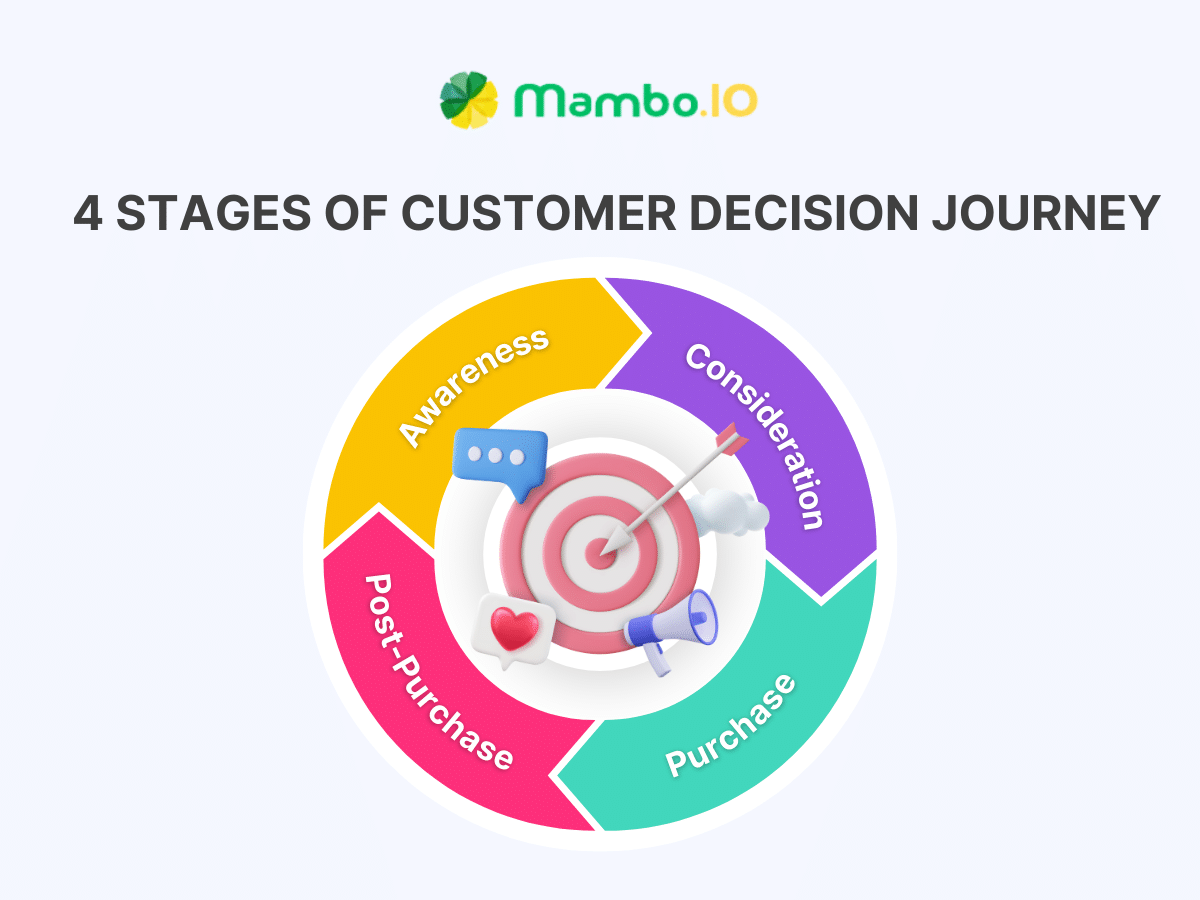
#1. Awareness
Potential customers will discover your brand and your products at this stage. They may hear about you from various sources, such as previous customers, word-of-mouth recommendations, or social media.
You want them to consider your brand as a potential option to solve their problem or meet their need. To accomplish this, you must:
- Identify your target audience and their pain points.
- Create a comprehensive brand campaign with a unique value proposition that differentiates your brand from competitors.
- Build brand awareness and visibility through marketing campaigns across various channels and platforms.
- Using traditional marketing remains important in overall brand positioning.
- Provide relevant and engaging content that educates and entertains your audience.
#2. Consideration
This is the stage where customers evaluate your products and compare their benefits with other alternatives. Customers seize control of their purchase decision but are still influenced by the initial consideration set.
Features, benefits, price, quality, reviews, and consumer-generated content influence the consumer decision journey.
You must persuade customers that your products are right for them by:
- Understanding your customers’ decision criteria and how they rank them.
- Highlight your competitive advantages and unique selling points.
- Providing clear and consistent information across all touchpoints.
- Addressing any objections or concerns that customers may have.
- Offering incentives or discounts to encourage the purchase.
#3. Purchase
The Purchase stage is where customers and consumers decide to buy your products. They may choose from various channels, such as online, offline, direct, or indirect, to complete their purchase.
This stage aims to make purchasing easy and convenient for your customers. To do this goal, you need to:
- Provide multiple payment options and secure transactions.
- Optimise your website or app for speed and usability.
- Reduce friction and barriers to purchase.
- Provide clear and timely communication on order status and delivery.
Create a sense of urgency or scarcity to motivate action.
#4. Post-purchase
This is the stage where customers experience your products after purchase. They may form opinions about your products based on past interactions or post-purchase experience.
They may also share their feedback with others or seek support from you. The post-purchase stage aims to turn customer satisfaction into a loyalty loop and encourage repeat purchases.
To achieve this goal, you need to:
- Deliver on your promises and expectations.
- Provide exceptional customer service and support.
- Encourage customer feedback and engagement.
- Reward customer loyalty and referrals.
- Anticipate customer needs and offer relevant solutions.
The importance of understanding the consumer decision journey
Understanding how customers make decisions can help you boost your business in several ways. It can:
- Help you tailor your marketing plan to the customer journey and communicate a suitable message at a suitable time through a suitable channel.
- Optimise your marketing budget and resources by focusing on the most influential touchpoints and stages.
- Make customers happier by providing a smooth and consistent interaction across all touchpoints and steps.
- Help you drive sales calls and get customers to stay and say good things about you by creating strong and long relationships with your customers.
How do consumers make purchasing decisions?
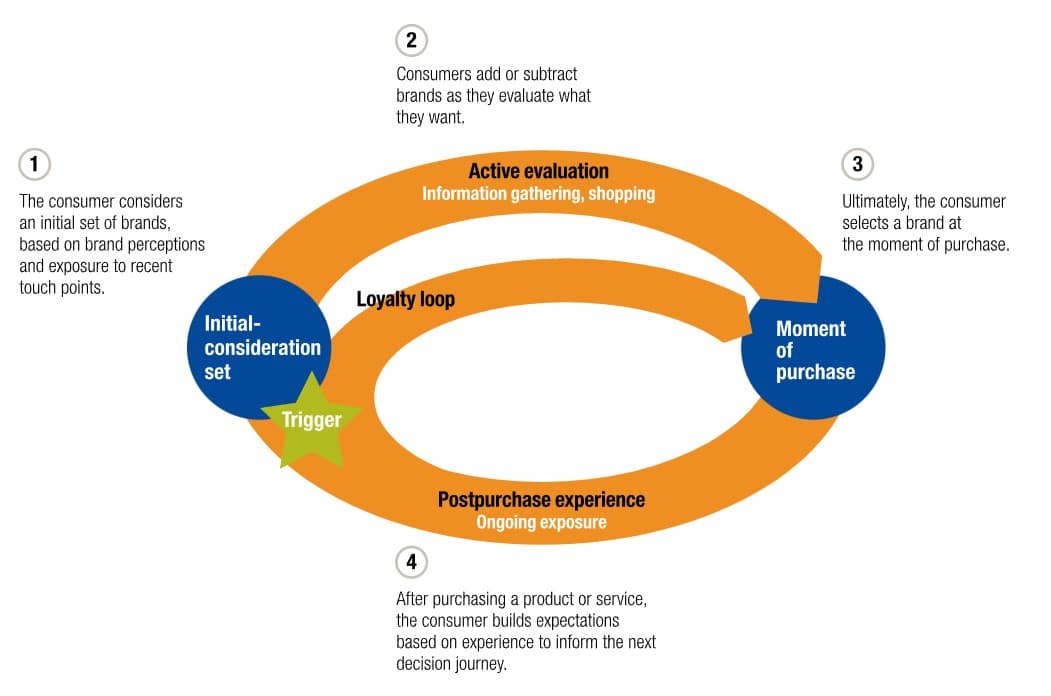
Source: McKinley & Company
Consumers weigh rational and emotional factors when they buy a product. Rational factors are about what the product can do and how good it is, such as quality and price. Emotional factors are how the product makes the consumer feel, such as trust, happiness, and status.
You must appeal to consumers’ rational and emotional aspects to influence their buying decisions. You need to show that you can attract consumers who tend to buy brands whose products are of high quality and make them feel something for your brand.
Also, you need to understand the consumer’s decision journey. It starts with a few known brands and changes as they learn more about their needs. It ends with a purchase and an expectation for the next journey.
How to use customer decision journey?
To use this to help marketers navigate the consumer decision journey effectively, you need to follow these steps:
#1. Identify customer touchpoints at each stage of the journey
Customer touchpoints are the contact points or interactions between your customers and your brand or products. They can be online or offline, direct or indirect, owned or earned.
Some common touchpoints are:
- Online: website, app, email, social media, blog, video, etc.
- Offline: store, call centre, event, billboard, flyer, etc.
- Direct: owned by you or paid by you.
- Indirect: owned by others or earned by you.
You must identify all the touchpoints your customers use or encounter at each journey stage. You can get this information by doing surveys, interviews, and analytics.
You can also turn your customer journeys into a customer journey map, showing internal and external factors affecting the customer experience.
Example: Each journey stage has matching touchpoints from Apple. Apple uses channels like websites, app stores, reviews, and more internet information sites to identify the customer’s touchpoint.
Online stores, physical stores, and resellers offer options and convenience—service, support, warranties, and more—that ensure loyalty and satisfaction.

Source: Macworld
#2. Tailor marketing messaging to the needs of each stage
Once you have identified the touchpoints, you need to tailor your marketing messaging to the needs of each step. You must consider what your customers want to know, feel, and do at each stage and craft your messaging accordingly.
For example:
- Awareness: Your messaging should create awareness and interest in your brand and products. You should highlight your value proposition and how to solve your customers’ problems or needs.
- Consideration: Make your customers see how your products are suitable for them. Try to convince them that your products are better than others.
- Purchase: Your messaging should encourage customers to act and buy your products. You should highlight your incentives and offers and how you can make the purchase process easy and convenient for them.
- Post-purchase: Your messaging should focus on retaining your customers and turning them into loyal advocates for your brand. You should highlight your appreciation and gratitude and how you can provide ongoing support and value to them.
Example: Nike’s brand marketing messages suit each journey stage. “Just Do It” attracts and builds awareness. “Find Your Fast” educates and informs. They persuade and urge customers to buy their following product or service.

Source: Muli Yeta
#3. Focus on building strong customer relationships and customer loyalty
Every purchase involves the same cycle of decision-making for customers. In this case, you need to establish customer loyalty and relationships. Customer loyalty is when consumers praise your brand and return to purchase it again. To build a customer relationship, you need to:
- Deliver on your promises and expectations.
- Provide exceptional customer service and support.
- Encourage customer feedback and engagement.
- Reward customer commitment and referrals.
- Anticipate customer needs and offer relevant solutions.
Doing so can increase customer satisfaction, retention, loyalty, and advocacy. You can also reduce customer churn and increase customer lifetime value.
Example: With personalised and convenient services, Amazon attracts, influences, delights, and engages customers. Trust and loyalty are built by customer reviews, ratings, feedback, and rewards. Throughout the journey of potential purchases, Amazon fosters strong customer relationships.

Source: ChannelReply
#4. Use feedback to improve the customer journey
Customer feedback is essential for improving the whole consumer decision-making process and journey.
Feedback lets you understand your customers’ thoughts and feelings about your brand and products. It also enables you to create customer interactions and spot gaps or issues in the journey that may influence the customer experience.
You need to collect customer feedback at various touchpoints and stages of the journey.
Example: Starbucks uses customer feedback to improve the consumer decision-making process and journey. It understands customer needs and preferences through social media and surveys. It improves its product, service, loyalty, and experience with customer feedback.

Source: SoftwareSuggest
#5. Incorporate social media and other digital marketing platforms
Social media and other digital marketing platforms are vital in the consumer decision-making process. You must include social media in your marketing strategy.
- Choose the right platforms that match your target audience and objectives.
- Create relevant and engaging content that attracts and retains your audience.
- Interact with your audience and respond to their queries or complaints.
- Monitor and measure your performance and impact on the platforms.
Example: Consumer electronics companies like Netflix expertly integrate social media and other digital platforms at each stage. It promotes its shows and movies and provides personalised recommendations. It offers subscription options, engages customers, and retains them.

Source: Better Marketing
#6. Continuously measure and analyse the effectiveness of marketing campaign
Finally, you need to constantly measure and analyse the effectiveness of your marketing across various pain points of the consumer decision journey. You need to track multiple metrics that reflect your goals and outcomes at each stage of the journey. For example:
- Awareness: brand awareness, reach, impressions, traffic, etc.
- Consideration: Initial consideration rate, conversion rate, leads, etc.
- Purchase: sales volume, revenue, profit margin, etc.
Example: Coca-Cola measures and analyses its consumer-driven marketing and efforts at each stage of the decision journey.
It uses different metrics to check every decision. It also sees its market size and growth by looking at brand equity, penetration rates and consumers’ weekly consumption.

Source: Issuu
What is a customer journey map?
A customer decision journey map visually represents your customers’ decision journey from awareness to loyalty. It can help you understand your customers and identify your touchpoints and channels.
Also, customer journey maps aid you in evaluating your marketing efforts and finding gaps or opportunities.
To make a consumer decision journey map, you need to:
-
Define your objectives and scope
What do you want to achieve, who do you want to target, and what are the limits?
-
Collect data and insights
What reliable data sources and methods do you use to get information about your customers and their journey? How do you guarantee their quality?
-
Analyse and synthesise
How do you organise and interpret the information? What patterns, trends, findings, and insights from qualitative research do you see?
-
Visualise and communicate
How do you show and share your consumer journey map? What tools and formats do you use, and how do you make it clear and compelling?
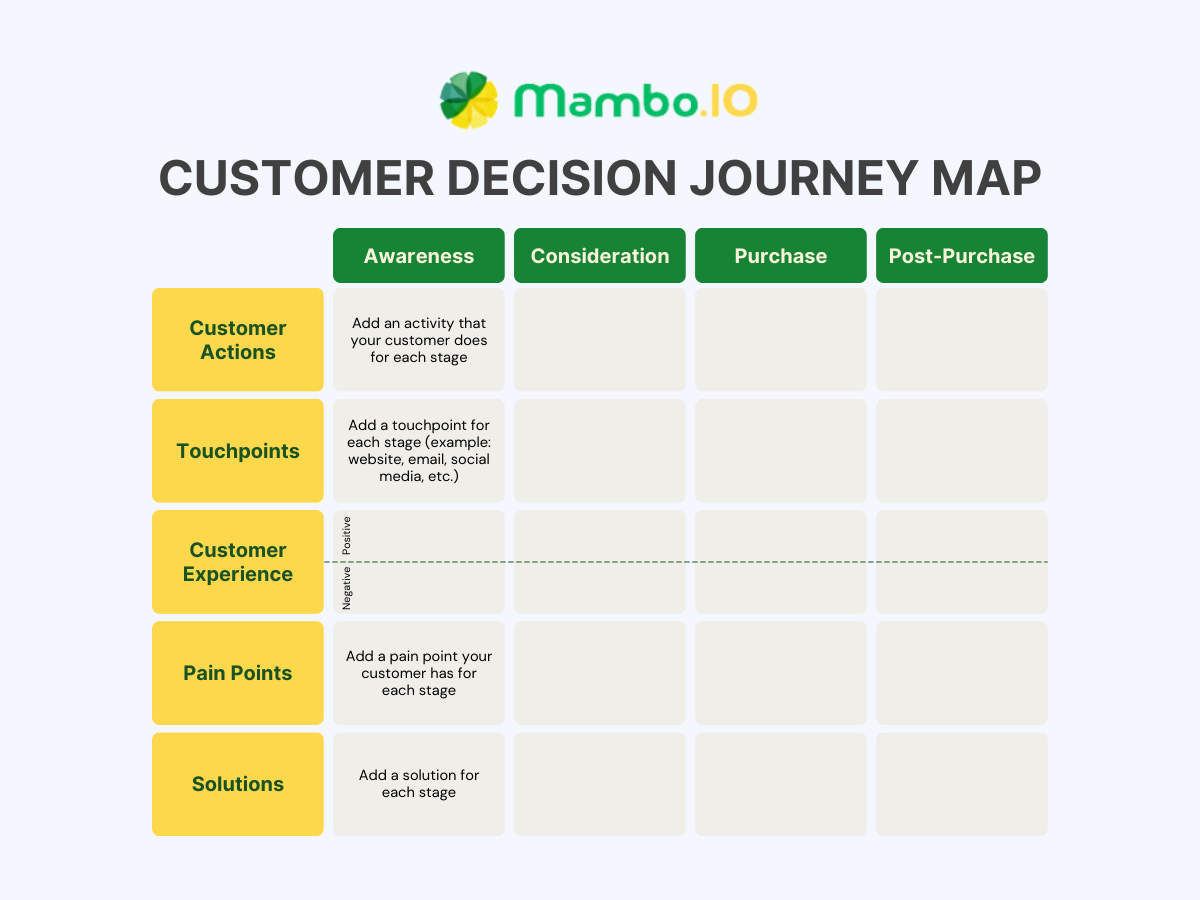
Following these steps, you can improve your customer experience and business performance by creating a consumer decision journey map.
You don’t need a flashy consumer journey map. You need one that shows the customer experience with clear touchpoints, steps, issues, and answers at every level.
Tips for optimising consumer decision journey
By following some best practices, you can optimise your customer journey and customer experience. This can also benefit your business’s performance. Here are some suggestions you can apply:
#1. Providing relevant information at each stage
Provide relevant information to your customers at each stage of their decision journey. For example, make them interested initially and show how your products are better than others in the initial consideration phase.
Also, help them buy easily at the moment of purchase decision stage, and help them use and enjoy your products after they buy.
Spotify is so good at promoting its service and features, comparison of plans and prices with social media, online ads, podcasts, etc. It supports and adds value for existing customers with its app, email, blog, Spotify Wrapped, etc.

Source: Working Media Group
#2. Personalisation of customer experience
Customers expect personalised experiences that cater to their individual needs and preferences.
You must use data and technology to segment your customers and understand their behaviour. You can also deliver customised messages and offers to your customers.
Grammarly is a writing tool that helps users communicate effectively by adapting to their goals, tone, and audience. It offers personalised feedback and suggestions. They send weekly usage reports to support users in improving their writing skills and clarity.

Source: Grammarly
#3. Providing exceptional customer service
Customer service is a critical factor influencing customer satisfaction, loyalty, and advocacy. To exceed customer expectations, you must deliver exceptional customer service.
You should show empathy, responsiveness, proactivity, and a focus on solutions.
Zappos.com offers free shipping, free returns, a 365-day return policy and 24/7 support to provide excellent customer service.
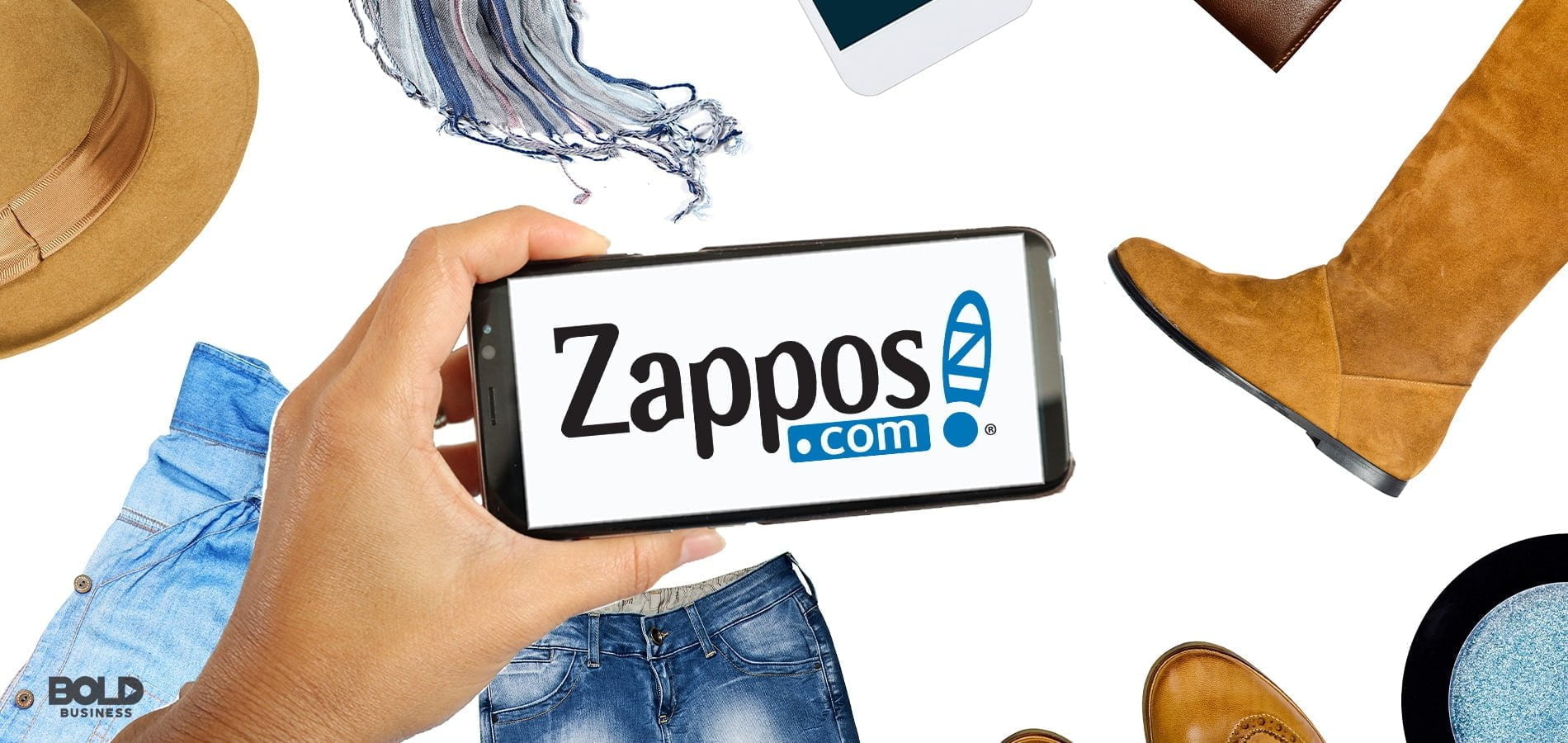
Source: Zappos
#4. Encouraging customer feedback and engagement
Customer feedback and engagement are essential for improving your products, services, and processes.
You need to get customer feedback and attention by asking what they think, want, and don’t like. You must also act on their feedback and show them you value their input.
Nordstrom is a champion for valuing customer feedback and engagement. It uses customer opinions to improve its offerings. It also tests and evaluates each product or feature launch.
They ensure that they deliver the fast and convenient experiences that customers want.
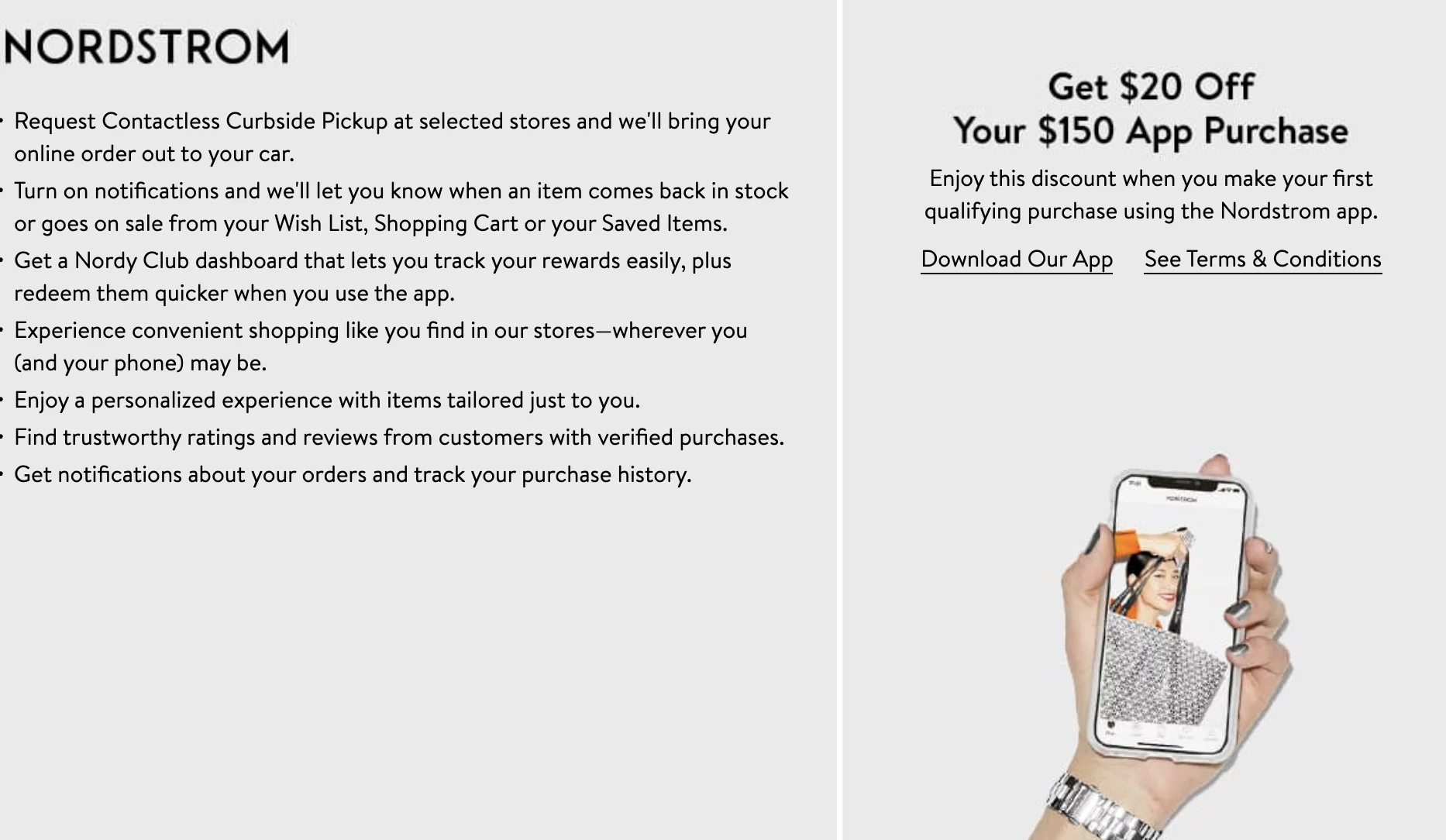
Source: Nordstrom
Conclusion
The customer decision journey is a framework that helps you understand the consumer decision-making process and how customers buy products in a complex market.
It lets you plan your consumer-driven marketing activities to match the customer’s steps and needs. It also makes customers happy by providing good service at every level.
A way to improve the consumer decision journey is to use Mambo Gamification Software.
Mambo.io makes your employees and customers happy and excited with games and prizes along their journey. It also measures and analyses customer feedback to improve your products and services.
To see how Mambo.io can improve your business with the customer’s steps, visit our website or talk to us now. Don’t miss this opportunity to take your business to the next level with Mambo.io!
Download your free
“Gamification Guide”
Get your PDF now and start transforming your approach to digital engagement!
Latest Posts
Machine Learning In Finance: 12 Essential Applications
The impact of machine learning on finance is significant. Thanks to this technology, financial institutions are now equipped to make efficient decisions. Through the analysis of data sets, machine learning […]
How To Create Interactive Compliance Training For Bank Employees
Banking compliance training isn’t just another task. It’s the stage where everything else performs. Banks must navigate a myriad of regulations and laws. After all, this is a trust-driven, high-stakes […]
How Fintech Apps Are Using Gamification To Increase User Engagement
Discover how gamification in fintech is revolutionizing financial engagement, making banking fun & boosting user loyalty.
